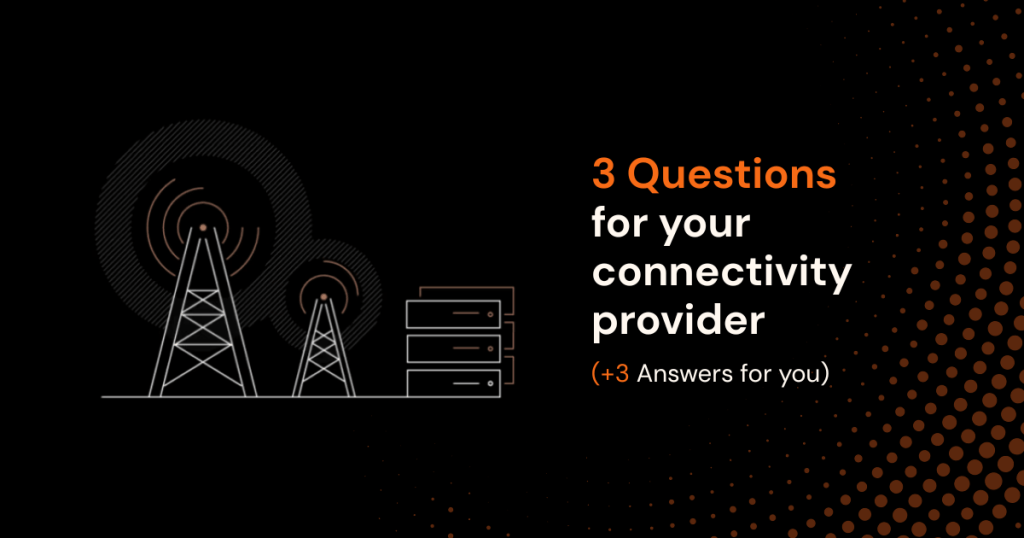The Internet of Things (IoT) is an industry (and buzzword) that is becoming more and more popular.
Understanding this exciting area of innovation will be vital for keeping track of increasing digitalization and concepts such as Industry 4.0.
IoT is generally made up of three components; the device, connectivity and the cloud.

I wrote this article to help people interested in the device part of IoT get a better understanding of IoT devices and how they are used in the world today.
Table of Contents
What is IoT?
To understand what an IoT device is, first we need to understand IoT.
The Internet of Things (IoT) is a term that covers “the network of physical objects that contain embedded technology to communicate and sense or interact with their internal states or the external environment,” according to the Global System for Mobile Communications Association (GSMA).
What are IoT devices?
IoT devices are specialized hardware like sensors, actuators, and appliances that connect wirelessly to networks to collect and exchange data. They perform specific tasks and are used across various fields, including medical, industrial, and environmental sectors, enhancing functionality through interconnectedness and real-time data communication.
But let’s deep dive into this term:
The 3rd Generation Partnership Project (3GPP), which develops and maintains technical specifications for mobile telecommunications, breaks up IoT devices into two categories; User Equipment (UE) and Infrastructure.
- User Equipment: Devices that connect to networks (including mobile phones, IoT devices, and computers).
- Infrastructure: The equipment UE connects to for telecommunication services and includes the access network and core network.
You can read the standard about General UMTS Architecture (3GPP TS 23.101 version 8.0.0 Release 8) for more information on User Equipment and Infrastructure.
It’s interesting here that 3GPP keeps mobile phones and computers separate to IoT devices. So with the information we have at hand, how shall we define IoT devices?
A good definition for IoT devices is “equipment that contains embedded technology to sense or interact with their environment and communicate with the internet.”
Smart home voice assistants like Google Home and Amazon Alexa are two of the most known IoT devices. But the number of generic trackers and environmental monitors deployed far outstrips the number of home assistants globally.
You could argue that smartphones and computers are IoT devices; they can sense the physical world and communicate data on it to the cloud. You can certainly use them as expensive IoT devices, but you usually don’t say something is part of IoT when it requires human interaction or control.
Examples of IoT devices
- Sensors
- Security devices
- Point of Sale (PoS) devices
- Medical devices
- GPS trackers
How many IoT devices are there today?
Steadily decreasing prices for sensors and chips, plus the proliferation of connectivity options over the last 15 years, have encouraged rapid IoT growth.
The global chip shortage from 2020 onwards has slowed down some of that progress, but the number of connected devices will continue to grow at pace when looking at longer horizons.
Let’s look at some statistics about the number of IoT devices out there from reputable sources.
IoT Analytics, a provider of market insights for IoT, has seen a shift from 3.6 billion IoT Devices in 2015 to 11.3 billion in 2020. Looking forward to 2025, they predict a massive leap to 27 billion IoT devices globally.

In their Annual Internet Report, 2018–2023, published in 2020, Cisco wrote that “M2M connections will grow 2.4-fold, from 6.1 billion in 2018 to 14.7 billion by 2023.”

Considerations when building IoT devices
On the hardware side, IoT devices generally contain a modem, antenna, microcontroller (MCU), IoT SIM card (if cellular), battery or power converter, some sort of sensor, and housing to contain the components.
On the software side, IoT devices need to not only be smart, i.e. be able to process some sort of information, but they also need access to the internet. This internet connection can be achieved via a physical local area network (LAN), WiFi, Bluetooth, satellite, or cellular connectivity, for example.
Sensors
You would generally begin with the sensor when solving real-world problems with IoT devices. Do you want to reduce water usage? Then a sensor that can monitor water flow is a critical piece of how your IoT device will create value.
Some examples of IoT sensors include:
- Temperature sensors (e.g. monitoring refrigerated devices)
- Location (e.g. GPS tracking of assets)
- Vibration (e.g. predictive maintenance in wind turbines)
- Gas (e.g. monitoring leaks)
- Humidity (e.g. monitoring food quality)
- Pressure (e.g. tank level monitoring)
- Level (e.g. measuring municipal waste container levels)
- Accelerometer (e.g. monitoring integrity during transit)
Connectivity and modem type
Commuting data to the internet after it is captured is critical. You’ll need to decide whether your use case is suited to e.g. satellite, cellular, or WiFi connectivity. In the case of cellular, should the modem be capable of connecting to 2G, 3G, LTE Cat 1 bis, LTE-M, or NB-IoT? A useful resource for answering such questions is frequencycheck.com.
In the cellular realm, dual band modems are almost always a good decision. It gives you the opportunity to select the optimal network technology for the location of your devices as well as a fallback connectivity option in case of issues with one of the bands.







